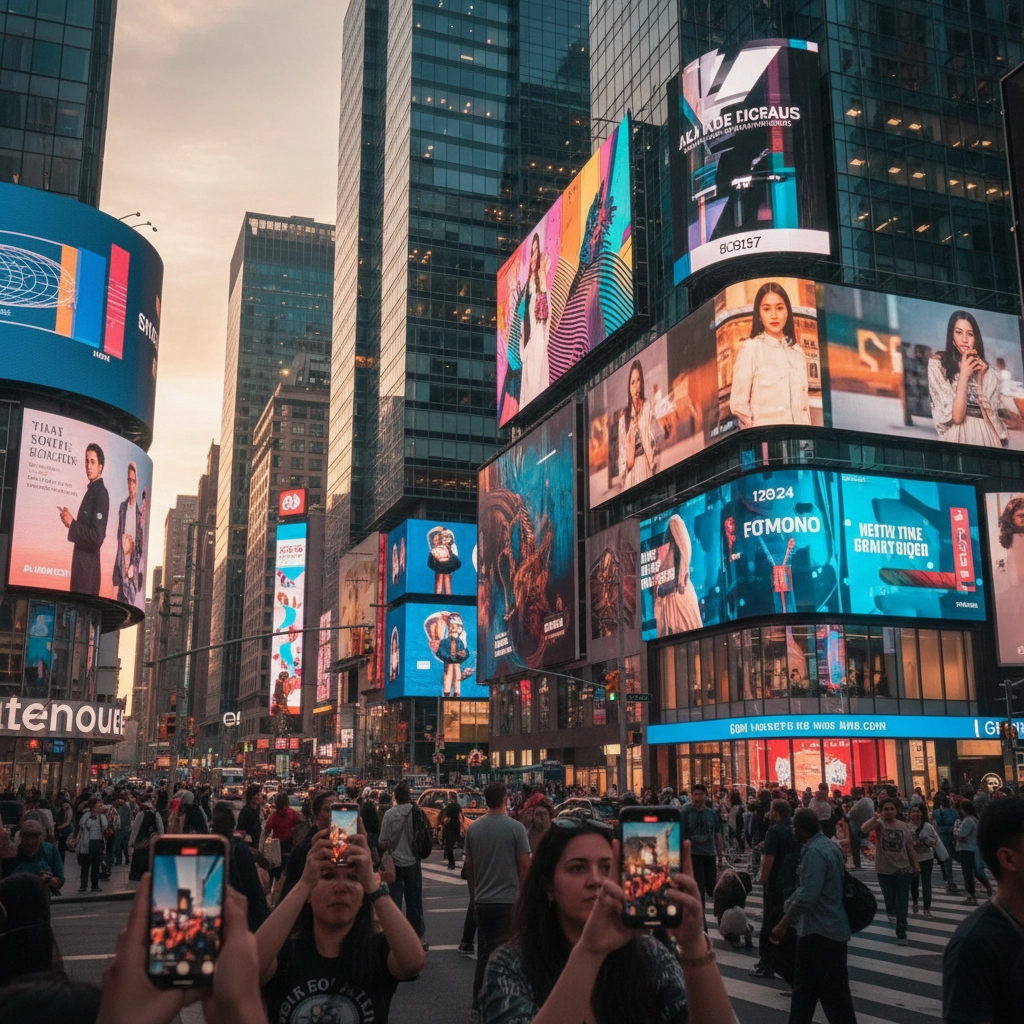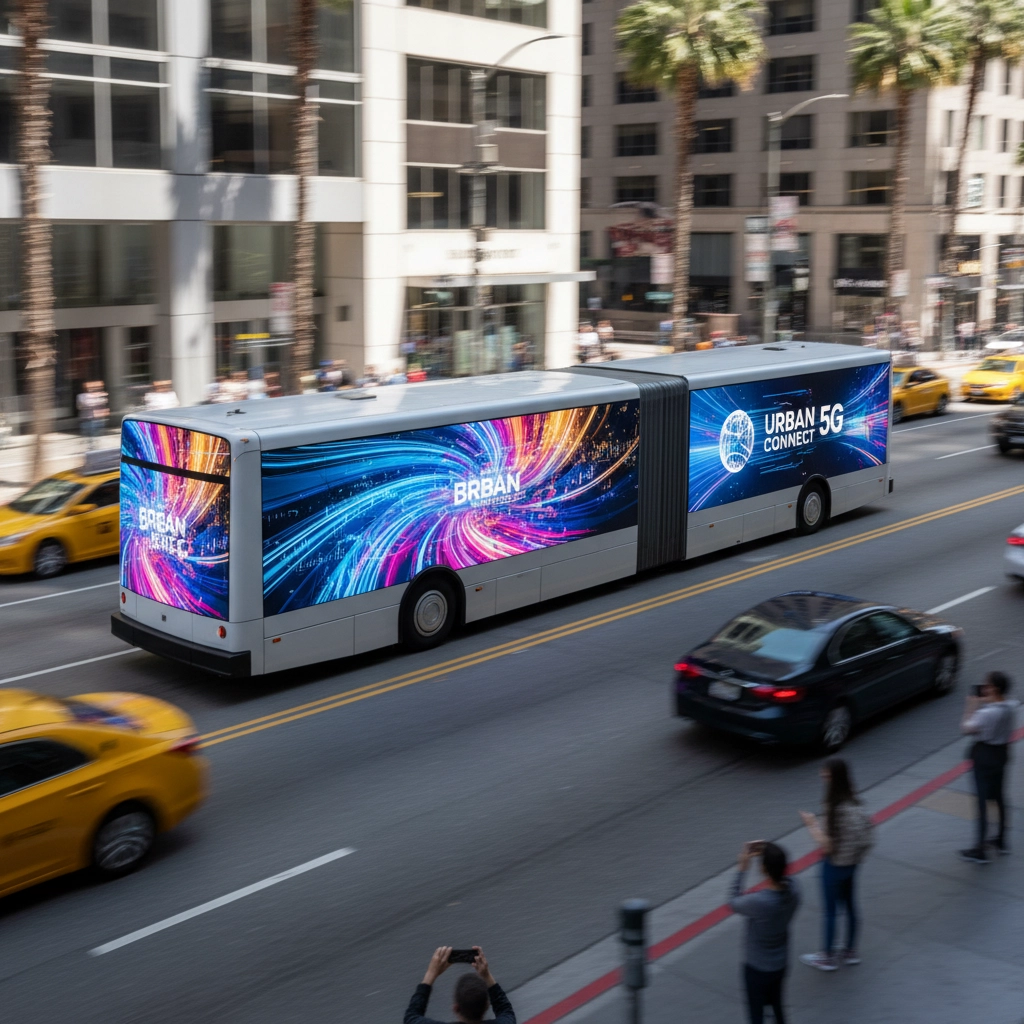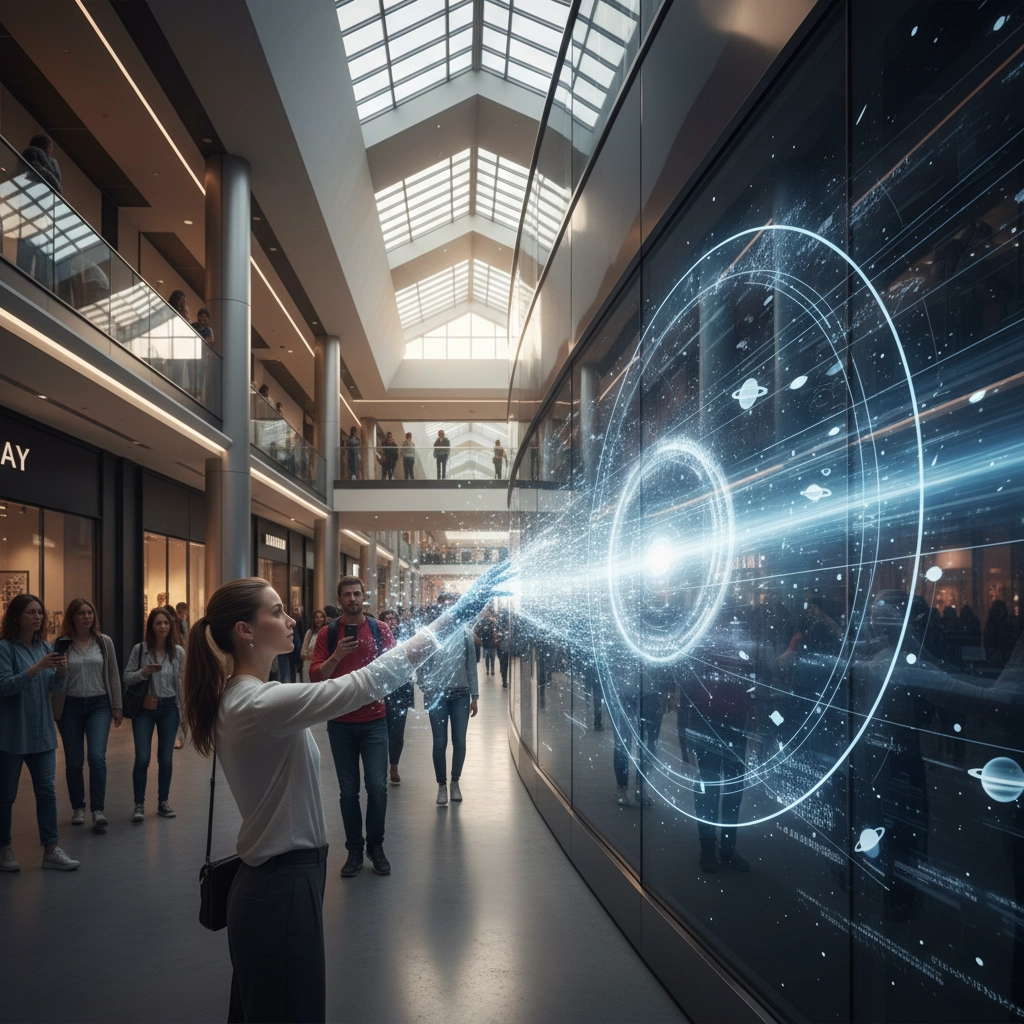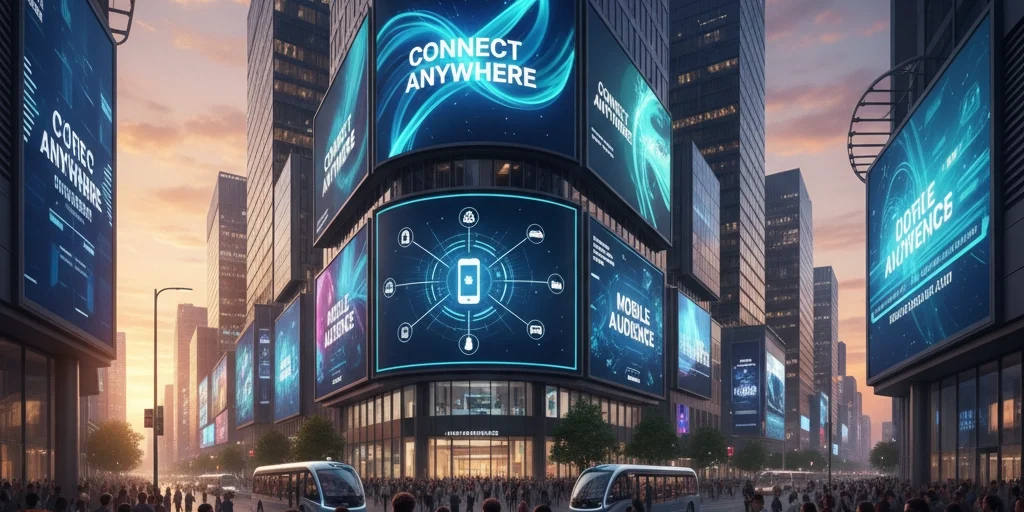Digital Out-of-Home (DOOH) advertising has undergone a fundamental transformation, evolving from static billboards into sophisticated, data-driven marketing platforms that effectively engage today's mobile-first consumers. This evolution represents more than technological advancement: it signifies a strategic shift toward precision marketing that rivals digital platform capabilities while maintaining the trusted presence of traditional outdoor advertising.
The industry has moved decisively beyond its brand awareness origins, demonstrating measurable capacity to drive engagement, conversions, and quantifiable business impact in real-world environments where consumers make purchasing decisions. As marketing budgets increasingly demand accountability and measurable returns, DOOH has positioned itself as a medium that combines the contextual relevance of physical spaces with the precision targeting capabilities of digital channels.
The Current Market Landscape
The DOOH advertising sector has reached unprecedented scale and sophistication, with growth indicators pointing toward sustained expansion. Total U.S. Out-of-Home revenue reached $9.1 billion in 2024, representing a 4.5% increase and marking the first time the industry exceeded the $9 billion threshold. This momentum has continued into 2025, with first-quarter revenue already reaching $1.98 billion, maintaining the industry's impressive growth trajectory.
Global projections for 2025 are even more compelling. Total advertising spend is expected to reach $992 billion, while digital out-of-home advertising and other digital formats are projected to rise 7.9% to $678.7 billion. Perhaps most significantly, programmatic DOOH alone is projected to exceed $1 billion by 2025, demonstrating the industry's rapid digital transformation and increasingly sophisticated targeting capabilities.
These figures reflect more than market expansion: they indicate fundamental changes in how advertisers approach out-of-home media. The traditional model of long-term, static placements has given way to dynamic, data-driven campaigns that can be optimized in real-time based on audience behavior, environmental conditions, and campaign performance metrics.

Programmatic Capabilities and Real-Time Optimization
Modern DOOH strategies center around programmatic advertising capabilities that enable real-time targeting and data-driven campaign optimization. Programmatic DOOH has become the industry standard, allowing advertisers to target audiences with real-time triggers and produce high-impact, measurable impressions in public spaces. This technological advancement represents a fundamental shift from traditional billboard advertising toward precision marketing that can compete directly with digital platform capabilities.
The power of real-time data integration has become one of the most compelling aspects of contemporary DOOH strategy. Advertisers can now access multiple data streams including weather patterns, location analytics, traffic conditions, and mobile device signals to tailor content dynamically. This contextual responsiveness enables DOOH to deliver messaging that corresponds directly to immediate environmental factors, making advertisements significantly more relevant and engaging for audiences encountering them in specific locations and circumstances.
Consider the practical applications of this technology: a coffee chain can automatically increase advertising frequency during cold weather periods, while a retail brand can adjust messaging based on foot traffic patterns or local events. These capabilities transform DOOH from a passive advertising medium into an active, responsive marketing tool that adapts to changing conditions and audience behaviors.
The integration of artificial intelligence and machine learning algorithms further enhances these capabilities, enabling predictive analysis that anticipates audience needs and behaviors based on historical data patterns. This evolution toward intelligent advertising systems represents a significant competitive advantage for brands seeking to maximize their advertising efficiency and effectiveness.

Mobile Integration and Multi-Channel Connectivity
Mobile OOH advertising represents a particularly innovative strategy that addresses the challenge of reaching increasingly mobile consumers. Unlike traditional static billboards confined to single locations, mobile advertising vehicles can cover multiple areas, ensuring messages reach broad and diverse audiences throughout their daily journeys. Digital displays mounted on vehicles, transit systems, and other moving platforms bring advertisements directly to consumers wherever they are, maximizing visibility in urban centers, commuter routes, and event-heavy locations.
Advanced mobile OOH implementations leverage sophisticated targeting capabilities, with digital displays capable of showing specific advertisements based on the neighborhoods they traverse. This approach tailors messages according to local demographics and contextual factors, ensuring that advertising content remains relevant to immediate audiences. The result is dramatically improved engagement rates and campaign effectiveness compared to broad-based advertising approaches.
The integration of mobile connectivity extends beyond moving displays to encompass comprehensive omnichannel strategies. Many DOOH screens now function as connected devices, capable of coordinating with mobile applications, social media platforms, and e-commerce systems to create seamless consumer experiences. This connectivity allows DOOH to serve as a bridge between digital and physical environments, facilitating consumer journeys that span multiple touchpoints and channels.
Furthermore, the emergence of 5G networks has significantly enhanced the capabilities of mobile-integrated DOOH systems. High-speed connectivity enables real-time content updates, interactive features, and sophisticated data collection that was previously impossible with traditional outdoor advertising formats.

Technology Innovation and Enhanced Engagement
Augmented reality technologies are driving unprecedented engagement surges in DOOH campaigns, with AR-enhanced installations delivering interaction rates exceeding 30% in prime locations and overall engagement increases of 300%. These immersive experiences transform traditional passive advertising encounters into interactive brand experiences that capture attention and encourage active participation from consumers.
The implementation of AR technology in DOOH environments creates opportunities for memorable brand interactions that extend beyond simple message delivery. Consumers can engage with products virtually, access additional information through smartphone integration, or participate in gamified experiences that build positive brand associations. These interactive elements significantly increase dwell time and message retention compared to traditional advertising formats.
Smart screens connected to cloud-based systems allow marketers to control and schedule campaigns remotely while incorporating motion graphics, videos, and animations that grab attention more effectively than static alternatives. The ability to update content instantaneously across multiple locations enables brands to respond quickly to market conditions, promotional opportunities, or current events.
Artificial intelligence-driven personalization has emerged as another significant technological advancement, enabling content adaptation based on real-time audience analysis and environmental factors. Machine learning algorithms can analyze demographic patterns, behavioral indicators, and contextual data to optimize message delivery for maximum impact and relevance.

Measurement and Return on Investment
The evolution of DOOH measurement capabilities has addressed one of the traditional challenges of out-of-home advertising: demonstrating quantifiable return on investment. Advanced measurement systems now provide detailed analytics including audience exposure, engagement rates, and attribution modeling that connects DOOH exposure to downstream consumer behaviors.
Attribution technology enables brands to track consumer actions following DOOH exposure, including website visits, mobile app downloads, store visits, and purchase behaviors. This capability transforms DOOH from a brand awareness medium into a performance marketing channel that can be evaluated using the same metrics applied to digital advertising platforms.
Real-time measurement dashboards provide campaign managers with immediate feedback on campaign performance, enabling rapid optimization and budget reallocation based on actual results rather than estimated impressions. This level of accountability has attracted performance-focused advertisers who previously avoided out-of-home media due to measurement limitations.
The integration of privacy-focused measurement solutions ensures that detailed analytics can be provided while maintaining consumer privacy and complying with evolving data protection regulations. These solutions utilize aggregated data and statistical modeling to provide actionable insights without compromising individual privacy.
Strategic Implementation for Mobile Audiences
Successfully reaching mobile audiences through DOOH requires strategic consideration of consumer movement patterns, attention dynamics, and contextual relevance. Mobile consumers typically encounter DOOH messaging during transition periods: commuting, shopping, or traveling: when attention spans are limited and environmental distractions are numerous.
Effective DOOH creative for mobile audiences emphasizes visual impact, concise messaging, and clear calls to action that can be processed quickly. The integration of QR codes, mobile-optimized landing pages, and social media elements creates seamless pathways for interested consumers to engage further with brand messages.
Location-based targeting strategies consider not only where mobile audiences are located but also where they are going and what activities they are likely to engage in at specific times and locations. This contextual understanding enables more relevant messaging that aligns with consumer needs and intentions.
The timing of message delivery becomes critically important when targeting mobile audiences. Rush hour commuters have different attention patterns and information processing capabilities compared to weekend shoppers or evening entertainment seekers. Successful campaigns adapt message frequency, content complexity, and visual design to match audience states and environmental conditions.
Future Outlook and Market Evolution
The convergence of advanced measurement capabilities, privacy-focused solutions, and sophisticated targeting technologies is transforming DOOH into an advertising medium that combines the trusted presence of traditional out-of-home marketing with the accountability and precision of digital platforms. Fortune 1000 brands are increasingly recognizing DOOH's potential for reimagining consumer connections in physical spaces, moving beyond simple brand awareness toward measurable engagement and conversion outcomes.
Industry experts predict continued growth in programmatic DOOH adoption, with automated buying platforms becoming the standard method for campaign planning and execution. This shift will democratize access to sophisticated targeting and optimization capabilities, enabling smaller brands to compete effectively with enterprise-level advertisers.
The integration of Internet of Things (IoT) sensors and environmental data sources will further enhance contextual targeting capabilities, enabling DOOH systems to respond to factors including air quality, crowd density, noise levels, and other environmental conditions that influence consumer behavior and message receptivity.
As consumer behavior continues evolving toward increased mobility and cross-channel experiences, DOOH advertising strategies that emphasize real-time responsiveness, contextual relevance, and seamless integration with broader digital ecosystems will become increasingly essential for brands seeking to maintain meaningful connections with their target audiences in an increasingly complex media landscape.







